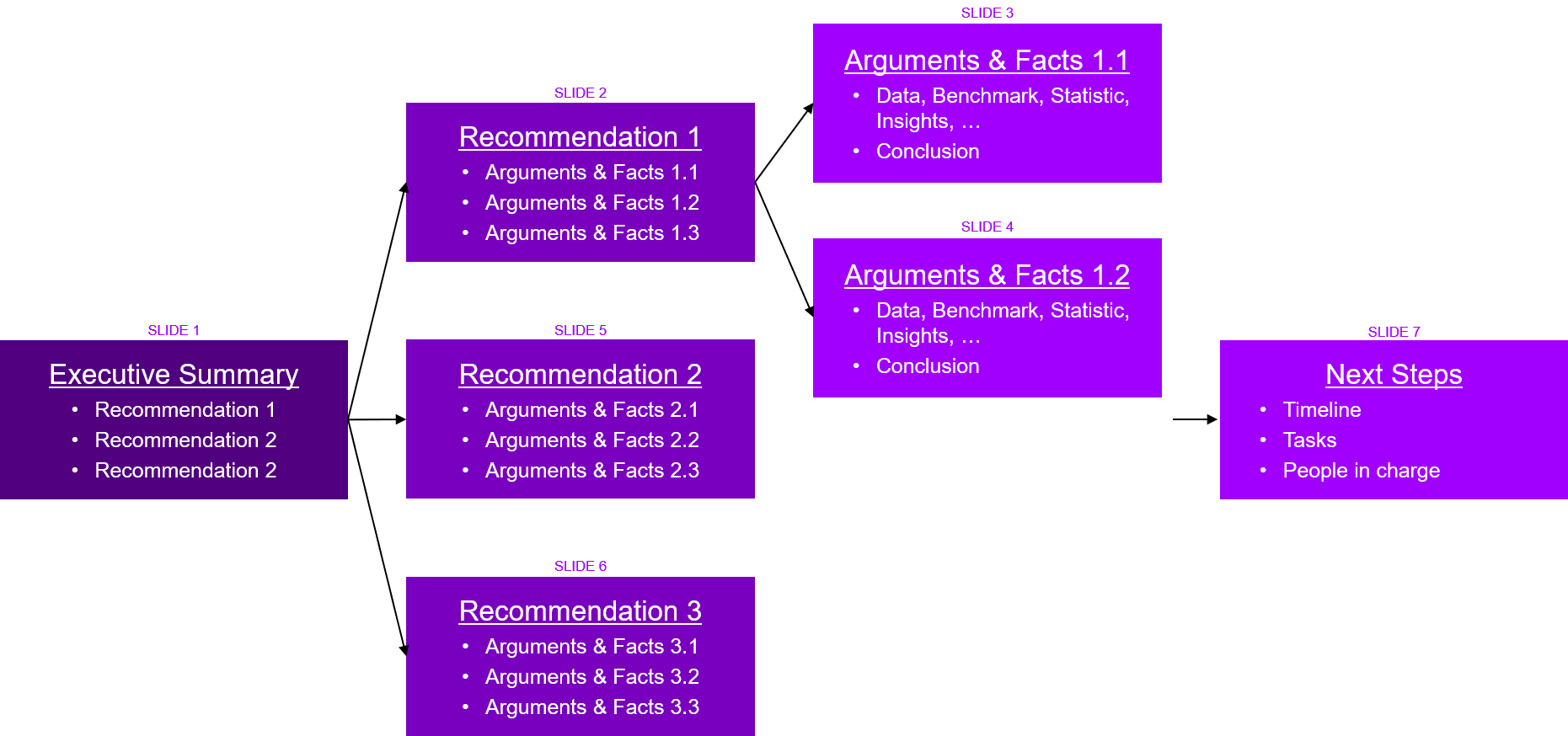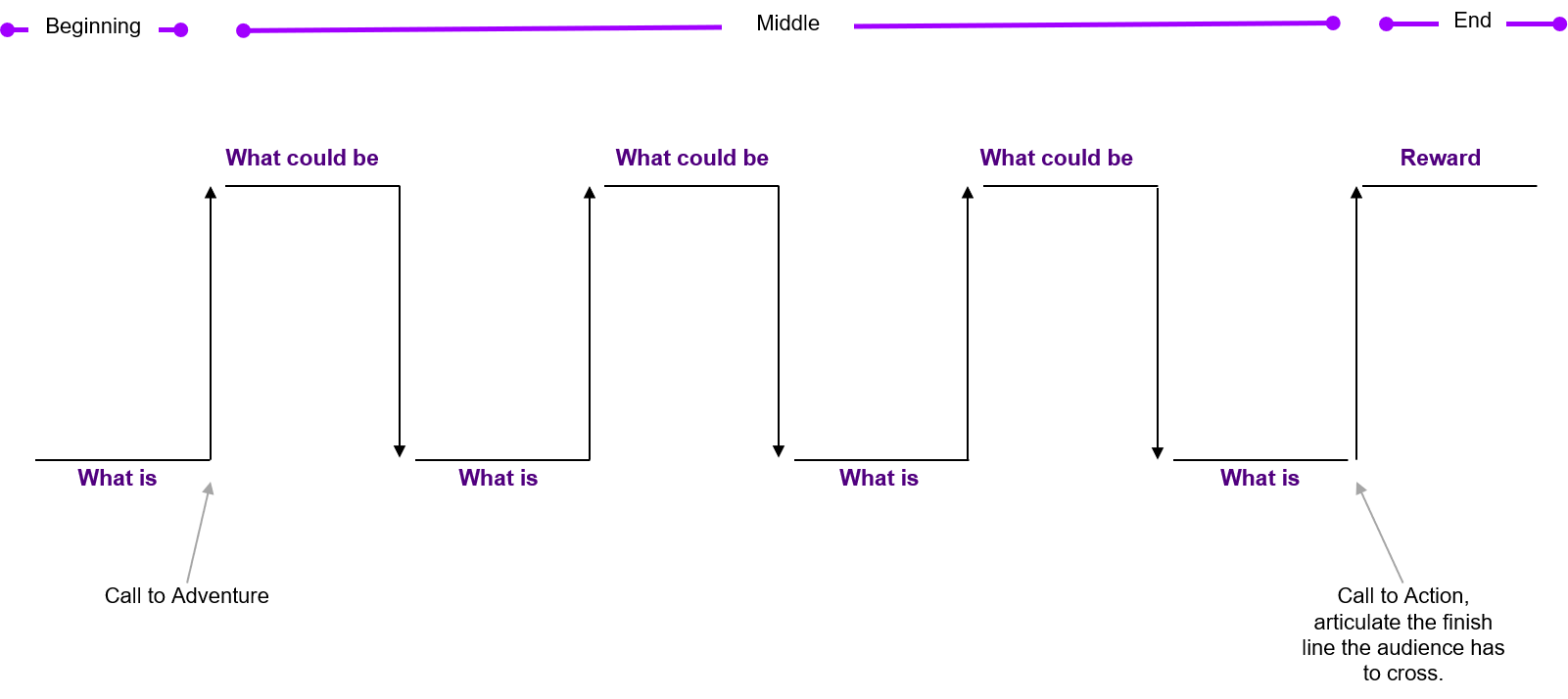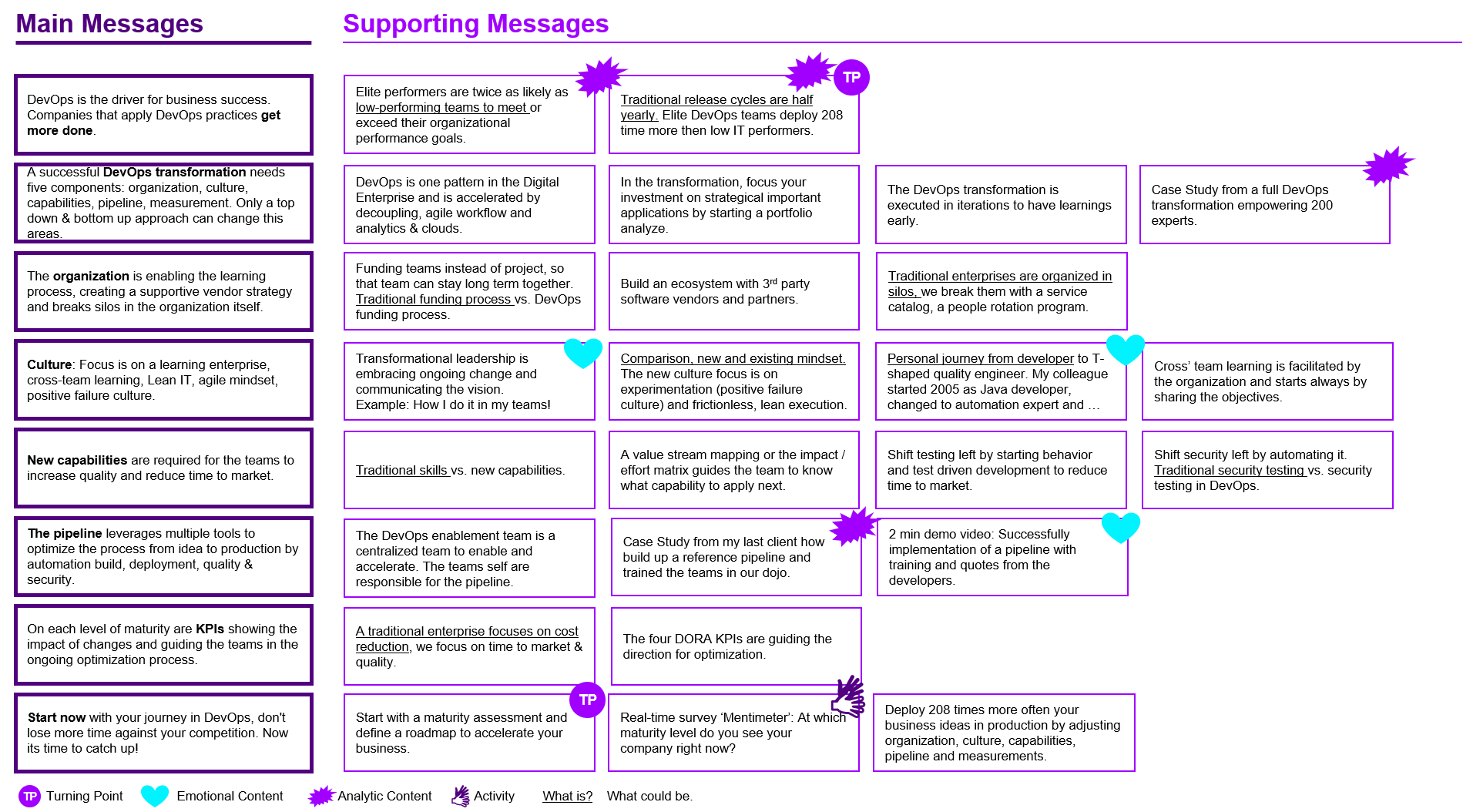Structure, Structure, Structure or three options to order your DevOps story
In consulting, communication skills are the tools of our trade. They differentiate your work between success and failure. But you don't learn them at the required level in school or in jobs outside of consulting. The first step to improve your communication is to find and use the right structure.
My professional journey started in banking, then I worked as a software developer and now I see myself mainly as a consultant. I’m lucky, I get to combine all my prior learned skills into my work as a consultant. I remember the time when I started as a consultant, I felt somehow lost, I felt like I was dropping off a cliff in a free fall. I didn’t expect to have so many struggles. I didn’t expect that consulting would be a skill that I would have to learn. Everybody can consult and advise others, right? But soon I realized that I had to adopt ‘consulting’ rapidly. My project lead, my mentor, books, and finally also the internet helped me over the hump. This process made me realize how important it is that our client and team mates understand what we have to say. Two elements are important for that:
Making complex things easy, but not too easy
Finding a good structure which underlines our message
We transport our message in slide decks, on whiteboards or in a dialogue. Slide decks are a good way to learn how to structure a story and to play around with different options. I see that many new consultants don’t have the skills to create a full story. Creating a powerpoint slidedeck is like writing a story. We have to keep in mind, why we write the story.
The main goal is always that our audience understands what we want. For that we have to take our listeners by the hand with a clearly defined structure. The structure also helps in simplifying the message: delete what is not supporting your story.
Essential to delivering our message is the structure of the presentation
In my daily work, I usually use three approaches to structure my presentation:
Situation, Complication, Solution
The pyramid approach from Barbara Minto
Nancy Duarte’s motivating story structure
Depending on the message, audience, purpose of the presentation and the time I have, I leverage these patterns and combine them with each other. For me, the approaches are not mutually exclusive, they complement each other. Let's have a look at each approach in particular:
1) Situation, Complication, Solution: Start where everyone is in agreement - define the initial situation
The first structure is one of the most common patterns I have seen. Consultants love this structure. This is simply, because it puts the presenter in the role of a problem solver: “We agree we have a problem, and this is the solution.” This approach clearly answers the question: “Why are we doing this?”
The structure has three components:
The situation that our client is in
The complication that makes it challenging to proceed with the solution
The solution that addresses the situation and the complications
I usually start by writing down in only one sentence the situation in which my client is. It takes time to grab it in only one sentence - it's easy to write multiple sentences. Don't take the easy way! To set the focus is important. It makes it simpler and easier to understand. If I have multiple aspects to describe the situation, I figure out which one is the most important for my presentation. A mind map can help to work out the most important aspect.
When I work in a group, I usually end up with more than one sentence. That's ok. But keep in mind, that you don't want to spend too much time in your presentation itself talking about the situation. Its only to set the scene for your further arguments and to make your thinking process transparent for your audience.
The second section describes the complication the client has in their situation. Here I show facts, numbers, my data, my insights from the industry the client itself and my learning from similar projects.
This leads me to the third section. In this segment I propose the solution to the described situation and complications. All is linked together, its a chain of reasoning, that shows clearly WHY we are proposing this specific solution. The solution has usually different components like:
Going to the cloud
Delivering in short agile iterations
Early involvement of change management experts
Building up a DevOps stack
Start with value stream mapping
Less is more. I see five to seven solution components as optimal. Because this quantity is easy to remember and juggle in your mind. You want that your audience understands and remembers your solution.
This structure tailors a service to the special requirements of a client. It shows that it is not ready made, this is the perfect solution for a specific problem my client has. And it clearly indicates us as someone who understands the situation our client is in and positions us as an advisor, someone who knows the way out.
How it works best:
Start your story simple by writing down all the sections
Combine them with ‘but’ and ‘therefore’
Then for each solution add one slide
Add supporting slides to the solution components if required, but keep it lean
When you present, pause after the first section (situation) and ask your audience if they agree or want to add something. Do the same for the following sections.
Example:
When to use it:
Optimal for shorter presentations when you have only less than an hour's time.
My go to when I don't know the audience, because you understand if the audience sees the situation or the complication different and can adjust your solution later
2) The Pyramid Approach: Make it Minto - start with the recommendations
A powerpoint slidedeck is a form of communication. We create the slides to communicate a complex story. We fail, if our audience is not understanding our story. The structure from Barbara Minto, former McKinsey employer and author of the book The Pyramid Principle, has developed the anti-pattern to the common scientific structure. Her method starts with the result. Common scientific structures focus instead on the approach; how to get to this result. Her structure is optimal if we present results after an assessment. In that case, the result is a consensus. We collected all the data, we discussed the outcome before the meeting with multiple stakeholders, incorporated their feedback and now we have to present a well balanced presentation to the leadership.
We present on the first slide the full solution, a summary for executives on one slide. The summary is structured in three to five recommendations. The recommendations are not overlapping, they are Mutually Exclusive and Collectively Exhaustive (MECE). This section is followed by one slide for each recommendation. On this slide we present the argument for each recommendation (data, facts, benchmarks, learnings, conclusions, ...).
In the last section we describe the next steps, the action to take to make this happen.
How it works best:
Order logically your recommendations (by time, by importance, etc. ...).
Formulate your summary in one sentence, thats helps to have the full story under a single thought.
The summary should take the reader 30 seconds to read.
Answer the question ‘so what?’ in your summary, don’t have only recommendations, you need the have the full story on the first slide.
Keep the schema of a mindmap: arguments on a higher level are always grouping the arguments on the lower level.
This approach requires a clear defined problem and a hypothesis.
Working process is from the bottom to the top of the pyramid: 1) gather information and facts, 2) group them and identify the insights, 3) formulate your recommendations.
Example:
When to use it:
For short presentations, with high ranked management
When you don't know how much time you have, or stakeholders might leave early in the meeting
When you present the outcome of an assessment
For data scientists / analytical experts to present the result of a hypothesis
3) Motivating story: Keep your audience engaged when your presentations take a little bit longer
The third pattern is based on the book Resonate from Nancy Duarte. When Barbara Minto represents more the traditional thinking with hypothesis, Nancy Duarte is the modern storytelling alternative. She combines ethos, pathos and logos to connect with the audience. The presentation is structured in three parts: beginning, middle and end. Between each part is a clear turning point required, so we have two turning points:
Between beginning & middle section: The call to adventure to create an imbalance by telling what could be.
Between the middle & end section: Call to action by articulating the finish line the audience has to cross.
The beginning shows the audience the reality, her current world, the actual situation. In the middle part, the content swings always between what is and what could be. In the end section, every one must understand the reward, the better future your change would bring. The audience leaves the presentation with the knowledge that the journey would not be easy, but is worth the reward.
I found this structure extremely powerful when pitching for a new project. In this presentation you have usually 1-2 hours time to present your solutions. In each solution component of your presentation you can show the current situation and show an example from another client as what could be.
The structure of a presentation, from Nancy Duarte, Resonate, page 36/37
The creation process of such presentation is the perfect exercise for a creative group. The process strengthens the group, and improves the presentation. It starts with collecting different ideas and clustering them. Then you shape the messages and supporting points for each message. A message is always supported by different elements, that can be data, best practices, examples from other clients. Here you create your what is and your what could be. Take care that all elements (ethos, pathos and logos) are addressed. If you know the social styles (Driving, Expressive, Amiable or Analytical) from your audience you can weight the elements.
The process to create a presentation, from Nancy Duarte, Resonate, page 143
How it works best:
See yourself as a mentor (like Yoda), your audience is the hero (like Luke Skywalker) of your story.
When I think about “what could be”, I remember always Martin Luther King's speech with “I have a dream”, that's also one of the examples Nancy Durate analyses.
Create contrast in your presentation with visuals, your voice, show your product, real time feedback (mentimeter.com, kahoot.com), sound, ….
Example, presentation “We accelerate with DevOps”:
When to use it:
To inform your audience is not enough, you have to inspire and win them.
You want to move people to action and be a motivator.
When you have time for the preparation and or when you prepare the slide deck in a group.
Balancing your story between too complex and too simple by using the right structure
My conclusion, after so many years in consulting, is that number one of each communication is that we understand each other. To send my message well structured is fundamental prerequisite for each other understanding and leads into a discussion along your objectives for the meeting.
These three examples shows how to structure the message we deliver. Only if the recipient understands our message, was our work successful. We use a structure to solve complexity. By using a structure we simplify our message and eliminate waste. But we should not forget. That complex topics are complex for a reason and to make it too simple, can kill the story.
Further reads:
Nancy Duarte: Resonate: Present Visual Stories that Transform Audiences
Gene Zelazny: Say It with Presentations
Barbara Minto: The Pyramid Principle: Logic in Writing and Thinking





